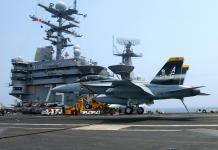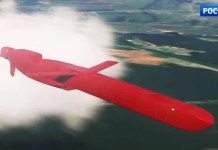The Taiwanese navy is all set to receive the latest US-made Phalanx self-defense close-in weapon system (CIWS) for its warships, according to military officials.
The CIWS system is the upgraded version of the old and trusted ‘Phalanx’ Block 1A, and Washington has already notified Taiwanese officials about the delivery schedule.
The systems would arrive by June-July this year. A total of 13 units of Phalanx Block 1B system would be delivered and will be installed on naval ships replacing the older Block 1A models.
What Is A Close-In-Weapon System?
A Close-In-Weapon System is designed to detect and destroy short-range incoming missiles or aircraft after they penetrate outer defense systems. Typically mounted on naval vessels, almost all of the modern warships are equipped with a CIWS system.
The CIWS system can either employ large-caliber guns or missiles or a combination of both (like the Pantsir-M). A gun-based CIWS usually consists of a combination of radars, computers, and rapid-firing multiple-barrel rotary cannons placed on a rotating turret.
The Phalanx Close-In Weapon System (CIWS) AKA "R2-D2" defends ships from threats posed by small boats, surface torpedoes and anti-ship missiles. The Block 1B variant fires 4,500 20mm rounds per minute. This is a live fire exercise on USS Bataan (LHD-5). #FirepowerFriday pic.twitter.com/M7ioD2E8Kd
— U.S. Naval Institute (@NavalInstitute) March 12, 2021
Missile-based CIWS uses either infra-red, passive radar/ESM, or semi-active radar terminal guidance to guide missiles to the targeted enemy aircraft or other threats. In some cases, CIWS is used on land to protect military bases (C-RAM). In the land-based versions, the CIWS can also protect the base from shell and rocket fire.
The Phalanx CIWS
Developed by the American company General Dynamics, the Phalanx CIWS has been in use with the United States Navy since the 1980s and has been exported to 15 countries worldwide. The US Navy deploys it on every class of surface combat ships except the Zumwalt-class destroyer and San Antonio-class amphibious transport dock.
The system consists of a radar-guided 20 mm (0.8 in) Vulcan cannon mounted on a swiveling base, capable of raining 4500 rounds per minute on an incoming target. The new Block 1B variant comes with control stations allowing the operator to visually identify and track targets before engagement, which was often an issue with older variants resulting in many accidents.
The system also comes equipped with a forward-looking infrared sensor making it more effective in engaging surface targets and have improved barrel life.




